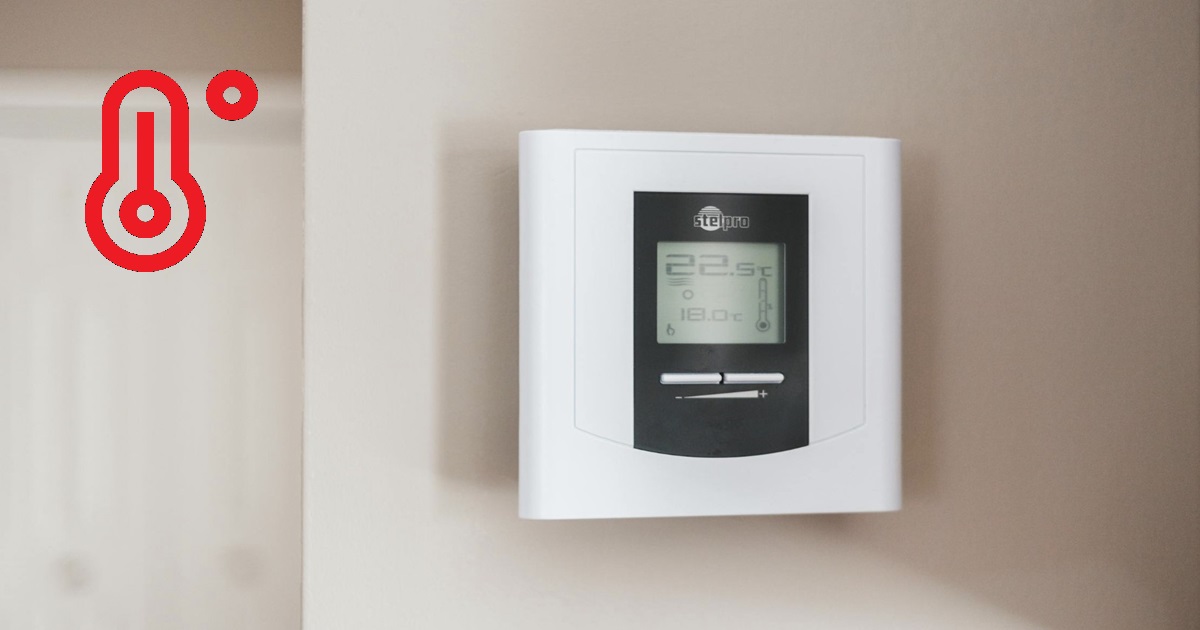The Best Summer Thermostat Temperature for Your House

source: Icon by UIcons / Pexels
My friend and I have a friendly rivalry when it comes to the thermostat in our homes. Every summer, it’s the same old story: Sarah’s family, like mine, can never seem to find the perfect place for the air conditioner. She despises heat with a passion – trust me! She has sent me messages in all caps, like “IT’S SO HOT I MIGHT MELT INTO THE COUCH!” and while we both laugh it off, I get it. It is equally frustrating to arrive home from work or other chores to find the house as hot as an oven.
That’s where I used to be. In our house, it was a war of the temperatures: my father preferred it to be very cold, my mother was always cold, and I just wanted to be warm. It was so bad that sometimes I’d just drive around in the car with the AC blasting because it was the only place I could find relief. All that changed when we were able to get a proper air conditioning system put in the house. But, of course, a new problem arose: what is the most suitable temperature for a thermostat in summer?
At our house, thermostat settings were a frequent source of contention. It was set and reset so many times it seemed as if we were trying to open a combination lock. This made me wonder, what is the perfect temperature for a home during the summer season? So, I started researching and this is what I discovered.

First of all, let me tell you about the settings that are suggested to be used. According to energy specialists and agencies such as the U. S. Department of Energy, it is recommended to set your thermostat to 78°F (25. 5°C) when you are at home and require cooling. This setting provides a comfortable environment without compromising the energy conservation aspect. But let me explain, 78°F may sound rather warm to some people, including Sarah who can actually sweat just by recalling the summer season.
By adjusting the thermostat to 78°F, you will be able to save a lot of money on your energy bills. For each degree you set the thermostat above 72°F (22°C), you will reduce your cooling costs by about three percent. For instance, if your thermostat is usually set at a low 70°F (21°C), adjusting it to 78°F could reduce your bill by about 24%. That’s a lot of money saved, which you could use for more fun activities during the summer such as going to the beach or buying ice cream.
But let’s get real. As anyone who has grown up in a colder climate can attest, 78°F can feel like a sauna. If you cannot tolerate it, then try 75°F (24°C) as a middle ground. It is still somewhat energy-saving and can be slightly more comfortable, especially if one uses fans to improve airflow. Ceiling fans are a great invention; they help to make the room feel cooler without having to change the temperature on the air conditioning system.

There is also the issue of time of the day which is at night. I also like sleeping in a cold room and I was happy to learn that it is safe to lower the temperature a little at night. They recommend keeping it in the range of 72°F to 74°F (22-23°C) for sleeping. Another thing that you can use is a programmable thermostat that can set the temperature for you. Thus, you do not have to adjust it before going to bed, and you will not wake up drenched in the middle of the night.
However, if you will not be at home for some time, for example, at work or on a weekend trip, it is recommended to set the thermostat to 85°F (29. 5°C). It is warm enough to conserve power but not overly hot to the extent that you have to return to a very hot house. Another feature of a smart thermostat is that it allows you to adjust the temperature from your smartphone. Think about changing the temperature of your home while you are relaxing on a poolside chair. Technology is amazing, right?
And because no conversation about thermostat settings would be complete without a mention of winter, here’s a quick tip for those chilly months: hold your heating system at 68°F (20°C) when you are at home and reduce it at night or when you are not at home. This is useful in as much as it helps to reduce on the costs of heating while at the same ensuring that you are warm enough.

Well, what did my family and I do then? We agreed on 76°F (24. 5°C) during the day and 73°F (23°C) at night. It is not the perfect solution, but it suits us well. My dad still adjusts the thermostat at night when he believes that nobody is watching him, but we are all in a much better mood (and temperature) now.
On the other hand, Sarah has fully committed to the smart thermostat lifestyle. She has been able to control the temperature from her phone and this has reduced on the quarrel that used to happen in her house. Plus, she’s saving money on her energy bills, which means more funds for our favorite summer pastime: like tasting all the flavors of ice cream in the nearby parlor.
Ultimately, the optimal thermostat setting for the summer is a delicate matter. It is about the comfort and at the same time being conscious of the energy usage and the expenses. Perhaps, it is about preventing a disaster – both the nuclear kind and the emotional kind. So, here’s to a cool and enjoyable summer, no matter how you adjust the temperature in your home!